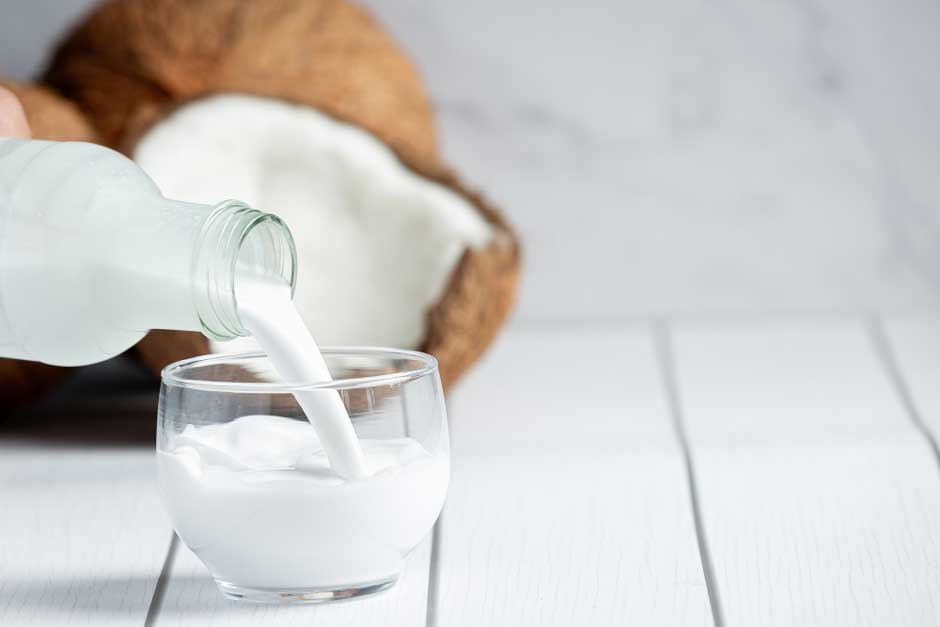For many people who suffer from the symptoms of irritable bowel syndrome (IBS) or who regularly experience digestive discomfort, eating a low-FODMAP diet has been clinically proven to be a beneficial lifestyle treatment.
To actively combat and manage these digestive issues, you can modify the different kinds of carbohydrates and fibers you consume. Although, there are misunderstandings about what you can and cannot consume, beginning a low FODMAP diet program can feel overwhelming.
It may be possible to minimize inflammation and give the gut lining time to heal itself by removing these irritants for a brief period. Once your symptoms become better, you can use the low FODMAP diet’s reintroduction phase to determine which foods your body can accept and those you can maintain in your diet, and which ones you should cut out.
This article will educate you on everything you need to know on starting a FODMAP journey. Read to the end.
FODMAP content varies among grains, legumes, fruits, vegetables, and meats. You might be able to take some foods in little doses, but you can’t eat them in large quantities without feeling uncomfortable. Always seek the advice of a healthcare professional to help you with the diet and ensure you are not nutrient deficient.
The main goal is to cut back on meals that cause gas, like short-chain carbs, which are poorly absorbed in the small intestine. This also helps to grow the gut’s beneficial bacteria. However, it is not a lasting diet solution.
Using it for two to six weeks and then gradually reintroducing tiny amounts of specific foods into your diet, decreases the symptoms of IBS or FGID.
What Is FODMAP?
FODMAPs are short-chain carbohydrates (sugars) that the small intestine has a hard time digesting. FODMAP is an acronym for Fermentable oligosaccharides, disaccharides, monosaccharides, and polyols. After consuming them, some people develop intestinal discomfort. These signs include:
- Cramping
- Diarrhea
- Constipation
- Abdominal bloating and Gas
Low FODMAP meal delivery services provide a selection of menu choices, including breakfast, lunch, and dinner, all of which are prepared using only low FODMAP ingredients. They deliver prepared meals specially made for people who are strictly on a low-FODMAP diet.
Low FODMAP Foods List
As long as they are eaten in the proper portion sizes, a wide variety of vegetables can be incorporated into a low FODMAP diet. It’s crucial to remember that some veggies, like garlic and onions, have a high FODMAP content. However, they can still be consumed in moderation (such as garlic-infused oil). It’s also crucial to be aware of serving sizes because even low FODMAP meals might trigger symptoms if consumed in big quantities.
- Fruits: Oranges, pineapple, blueberries, cantaloupe, grapes, kiwifruit, bananas, and strawberries.
- Low FODMAP veggies: Bok choy arugula, carrots, oil infused with garlic (Used in small amounts), eggplant, lettuce, green beans, squash, sweet potato, scallions (Green sections alone), spinach, tomato, and turnips.
- Proteins include chicken, eggs, fish, hog, beef, and tofu (firm and in small amounts).
- Grains include gluten-free bread, quinoa, corn, oats, and rice (certified gluten-free).
- Dairy substitutes include almond, soy, and lactose-free milk (with less than 2g of total sugar per serving).
- Almonds, chia seeds, sunflower seeds, and walnuts are some nuts and seeds.
- Legumes: Split peas, lentils, and chickpeas (in small amounts).
- Sweeteners: Stevia, maple syrup, and honey.
- Spices and herbs: Basil, black pepper, cilantro, coriander, cumin, oregano, parsley, rosemary, and thyme.
FODMAP Foods to Avoid
There are certain foods to avoid or limit if you want an effective and smooth FODMAP diet. These foods contain high FODMAP which may affect your well-being. However, do consult your doctor for help. Here are some of the food or contents to avoid in food products.
- Foods produced with high-fructose corn syrup (HFCS)
- Chutney, HFCS-sweetened jams and jellies, agave, honey, molasses, garlic salts and powders, onion salts and powders, salsa, and tomato paste
- Any dish prepared with isomalt, or artificial sweeteners
- Dairy products high in lactose, such as buttermilk, goat’s milk, creamy sauces, milk chocolate, custard, other soft cheeses, and soymilk derived from soybeans
- Fruits include apples, apricots, blackberries, mango, nectarines, guava, peaches, pears, plums, plums, and watermelon
- Beans, chickpeas, and soybeans
- Cashews
7-Day Low FODMAP Meal Plan For You
The meal plan below is an example for beginners who wish to start a FODMAP routine. Note that you can change this meal plan based on your preferences and dietary requirements. However, ensure to consult a healthcare practitioner before making any dietary changes. Here is a food plan consisting of only low FODMAP meals you can try for 7 days.

Day 1
- Breakfast: Scrambled eggs with tomato, spinach, and gluten-free bread.
- Lunch: Roasted sweet potato, steamed carrots, and grilled chicken breast.
- Dinner: Grilled salmon over quinoa and a salad of mixed greens.
Day 2
- Breakfast: Oatmeal without gluten, almond milk, and fresh berries
- Lunch: Gluten-free turkey and cheese sandwich with a side of cucumber slices.
- Dinner: Fajitas with grilled chicken, peppers, onions, and zucchini. You can add corn tortillas to the dish.
Day 3
- Breakfast: Fresh fruit and gluten-free granola in a yogurt parfait.
- Lunch: Grilled chicken salad with carrots, mixed greens, and balsamic vinaigrette.
- Dinner: Stir-fried beef with vegetables and rice (No tomato paste).
Day 4
- Breakfast: Avocado toast with poached eggs and tomato.
- Lunch: Tuna salad, mixed greens, and gluten-free crackers.
- Dinner: Grilled shrimp with mashed potatoes flavored with garlic.
Day 5
- Breakfast: Smoothie bowl with almond milk, frozen berries, and granola without gluten.
- Lunch: Tomato soup and grilled cheese sandwich on gluten-free bread.
- Dinner: Baked salmon, brown rice, and roasted asparagus.
Day 6
- Breakfast: Whole grain gluten-free toast and scrambled eggs with cheese.
- Lunch will be balsamic vinaigrette-dressed mixed greens with grilled chicken and vegetable kebabs.
- Dinner will be spaghetti with tomato sauce, grilled chicken, and gluten-free noodles.
Day 7
- Breakfast: Gluten-free pancakes and fresh fruit.
- Lunch: Wrap of grilled chicken, mixed greens, and balsamic vinaigrette.
- Dinner: Roasted potatoes and green beans.
Tips To Start A FODMAP Diet Journey
For people with digestive problems like irritable bowel syndrome, embarking on a low FODMAP journey can be beneficial. Note that tolerance to FODMAP varies from person to person, therefore it’s crucial to be patient and follow the procedure precisely to find what works best for you.
- Speak With A Healthcare Expert
Before making any dietary changes, it’s essential to consult a physician or a qualified dietician, especially if you have a medical condition.
- Study Up On The FODMAP Diet
Learn about FODMAP, sources, low FODMAP veggies, and other low FODMAP meals. Numerous online and printed resources are available that can be helpful.
- Start The Elimination Phase
For some time, usually 4-6 weeks, you must refrain from eating high-FODMAP meals. This will enable you to assess whether your digestive discomfort becomes better.
- Consider Consulting With A Certified Dietitian
Consult a certified dietitian who is educated about the low FODMAP diet if you need more support. They can guide you through it and ensure you are receiving all the nutrients you require.
Conclusion
It is best to start fresh and simple if you decide to follow a low FODMAP diet. Get rid of all the foods to avoid from your pantry. Ensure to look for HFCS on food labels and check thoroughly for other food contents. However, restricted foods can be used sparingly if it is mentioned toward the end of the ingredient list.
Additionally, you can skip the stress of catering for your low FODMAP list and sign up for low FODMAP delivery services. This will help you maintain consistency and save time. Always ensure to consult a medical professional before making changes in your low FODMAP plan or embarking on its journey.















